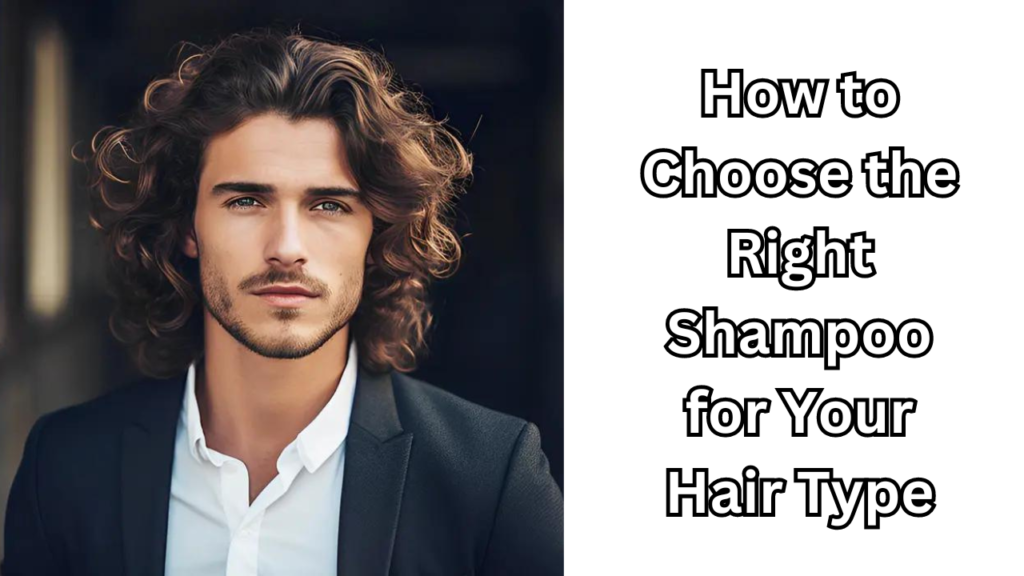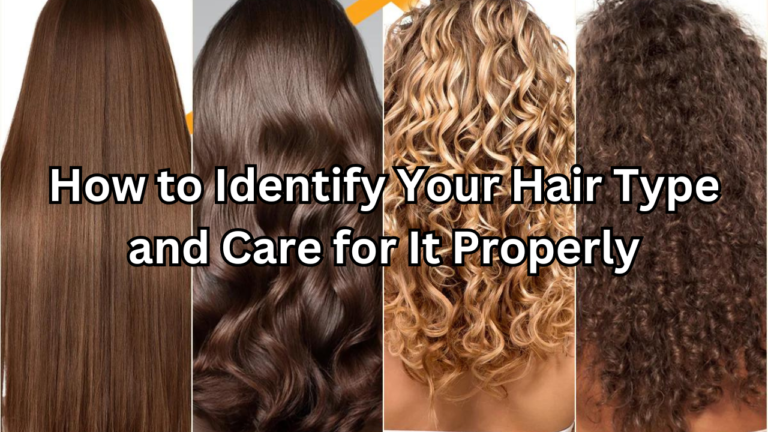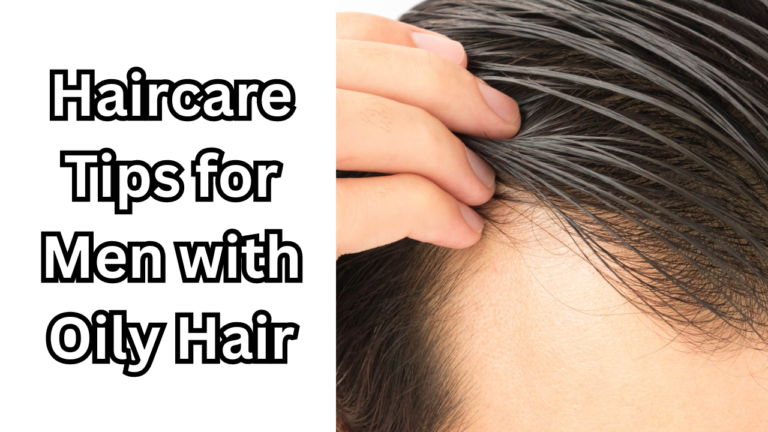

Table of Contents
Introduction
Choose the right shampoo is more than just a matter of preference; it’s a crucial decision for maintaining the health and appearance of your hair. With countless shampoos on the market, each promising various benefits, choosing the right one tailored to your specific hair type can greatly impact your overall hair care routine.
Importance of Choose the Right Shampoo
Choose the right shampoo plays a pivotal role in achieving and maintaining healthy hair. Using a product suited to your hair type ensures that you address specific needs, from controlling oiliness to enhancing moisture. For instance, a shampoo formulated for oily hair helps balance sebum production, while one designed for dry hair provides essential fashion.
Moreover, the right shampoo contributes to the scalp’s equilibrium. A balanced scalp is less prone to issues such as dandruff, excessive oiliness, or dryness. Shampoos that match your hair type help maintain this balance, promoting a healthier environment for hair growth and reducing common scalp problems.
Overview of Hair Types
Understanding your hair type is the first step in selecting an appropriate shampoo. Hair types generally fall into several categories, each with unique characteristics and needs:
- Straight Hair: Typically smooth and shiny, straight hair can range from fine to coarse. It may require a shampoo that enhances shine or adds volume without weighing it down.
- Wavy Hair: Wavy hair has a natural wave pattern and can be prone to frizz. It often benefits from shampoos that define waves and control frizz while providing moderate moisture.
- Curly Hair: Curly hair has a distinct curl pattern and tends to be drier than straight hair. Shampoos for curly hair should provide ample moisture, reduce frizz, and enhance curl definition.
- Coily Hair: Coily hair features tight, corkscrew curls and can be the driest of all hair types. Shampoos for coily hair should offer intense hydration, help with detangling, and maintain curl definition.
Understanding Your Hair Type
Choosing the right shampoo requires a deep understanding of your hair’s unique characteristics. Here’s a guide to help you identify your hair texture, determine its porosity, and assess your scalp type.
Identifying Hair Texture
Hair texture refers to the natural pattern or shape of your hair strands. Understanding your hair texture is crucial in selecting the right shampoo to address specific needs.
- Straight Hair: Straight hair falls naturally without any curls or waves. It is often shiny and smooth but can become greasy quickly if not washed frequently. Shampoos for straight hair should focus on volume and maintaining cleanliness without adding excess weight.
- Wavy Hair: Wavy hair forms a gentle wave pattern and can range from loose, beachy waves to more defined, s-shaped curls. This texture can be prone to frizz and requires shampoos that enhance wave definition and control frizz while providing moderate moisture.
- Curly Hair: Curly hair has a natural curl pattern that ranges from loose curls to tight ringlets. It is usually drier than straight or wavy hair due to the natural oils having a harder time traveling down the strands. Shampoos for curly hair should provide hydration, enhance curl definition, and reduce frizz.
- Coily Hair: Coily hair features tight, corkscrew curls and has a more pronounced curl pattern. This type is often the driest and most fragile, needing shampoos that offer intense moisture, detangling properties, and curl-enhancing ingredients.
Determining Hair Porosity
Hair porosity refers to how well your hair absorbs and retains moisture. This is an important factor in choosing a shampoo, as different porosities have different needs.
- Low Porosity: Hair with low porosity has tightly closed cuticles that make it difficult for moisture to penetrate. It may appear shiny but can be resistant to absorbing conditioners and treatments. Shampoos for low porosity hair should be lightweight and free from heavy oils and butters to avoid product build-up.
- High Porosity: High porosity hair has more open cuticles that absorb moisture easily but can also lose it quickly. This type of hair often feels dry and is prone to frizz. Shampoos for high porosity hair should be rich in moisturizing and nourishing ingredients to help lock in hydration and maintain softness.
Assessing Scalp Type
Your scalp type plays a crucial role in selecting the right shampoo, as it affects how your hair feels and behaves.
- Oily Scalp: An oily scalp produces excess sebum, leading to greasy hair and potential build-up. Shampoos for oily scalps should be clarifying and designed to control oil production while providing a deep clean. Look for ingredients like tea tree oil or salicylic acid.
- Dry Scalp: A dry scalp lacks moisture and may feel itchy or flaky. Shampoos for dry scalps should be hydrating and soothing, containing ingredients like aloe vera, glycerin, or chamomile to alleviate dryness and maintain moisture balance.
- Normal Scalp: A normal scalp has a healthy balance of oil and moisture. Shampoos for normal scalps should maintain this equilibrium without causing excess dryness or oiliness. Opt for gentle, balanced formulations that clean without stripping natural oils.
- Sensitive Scalp: A sensitive scalp can be prone to irritation and redness. Shampoos for sensitive scalps should be hypoallergenic and free from harsh chemicals or fragrances. Look for soothing ingredients like calendula or oat extracts to minimize irritation.
Choosing Shampoo Based on Hair Type
Selecting the right shampoo involves more than just choosing a popular brand—it requires understanding the unique needs of your specific Men hair type. Here’s how to choose the best shampoo for different hair textures:
For Straight Hair
Key Characteristics: Straight hair often has a fine texture and can become oily quickly. Its natural oil can weigh down the hair, leading to a greasy appearance if not managed properly.
Recommended Shampoos:
- Volumizing Shampoos: These shampoos are designed to add body and lift to fine hair, preventing it from appearing flat and limp. Look for lightweight formulations that enhance volume without adding extra weight.
- Clarifying Shampoos: Ideal for managing excess oil and product build-up, clarifying shampoos provide a deep cleanse, helping to maintain a fresh and clean appearance. Use these occasionally to avoid stripping the hair of essential moisture.
For Wavy Hair
Key Characteristics: Wavy hair has a medium texture and is prone to frizz, especially in humid conditions. It requires balance to maintain defined waves without frizzing.
Recommended Shampoos:
- Moisturizing Shampoos: These provide the necessary hydration to keep waves smooth and prevent them from becoming dry and frizzy. Look for shampoos with hydrating ingredients like coconut oil or shea butter.
- Anti-Frizz Shampoos: Formulated to combat frizz and enhance wave definition, these shampoos often contain smoothing agents that help to keep your waves controlled and looking their best.
For Curly Hair
Key Characteristics: Curly hair is naturally dry and can be prone to frizz and tangling. It often needs extra moisture and care to maintain its curl pattern and manageability.
Recommended Shampoos:
- Hydrating Shampoos: Rich in moisturizing ingredients, these shampoos help to nourish curls and reduce dryness. Ingredients such as glycerin, jojoba oil, or honey are beneficial for adding moisture.
- Sulfate-Free Shampoos: Sulfates can strip curly hair of its natural oils, exacerbating dryness and frizz. Sulfate-free shampoos are gentler and help to maintain the natural moisture balance of curly hair.
- Curl-Enhancing Shampoos: These are formulated to define and enhance the natural curl pattern while minimizing frizz and ensuring that curls remain bouncy and well-shaped.
For Coily Hair
Key Characteristics: Coily hair is very dry and features tightly coiled curls. It is delicate and requires extra care to avoid breakage and maintain its natural texture.
Recommended Shampoos:
- Deeply Moisturizing Shampoos: These shampoos provide intense hydration, crucial for preventing dryness and maintaining softness. Look for ingredients like shea butter, olive oil, or avocado oil that deeply condition and nourish the hair.
- Nourishing Shampoos: Formulated to provide essential nutrients and strengthen the hair, nourishing shampoos help to protect coily hair from damage and breakage while maintaining its natural curl pattern.
By choosing shampoos specifically designed for your hair type, you can address its unique needs and keep it looking and feeling its best.
Special Considerations
Certain hair concerns require specific shampoo formulations to address unique needs. Here’s how to choose the right shampoo for color-treated hair, damaged or chemically treated hair, and sensitive scalps.
Color-Treated Hair
Importance of Sulfate-Free and Color-Safe Shampoos:
Color-treated grooming hair requires special care to maintain its vibrancy and prevent premature fading. Sulfates, common in many shampoos, are harsh cleansing agents that can strip away the color and moisture from dyed hair.
- Sulfate-Free Shampoos: These shampoos avoid sulfates and other harsh detergents, offering a gentler cleansing experience. They help preserve the color and ensure that your hair remains vibrant for a longer period. Look for labels that specify “sulfate-free” or “sulfate-free” formulas.
- Color-Safe Shampoos: Specifically designed to protect hair color, these shampoos often contain ingredients that seal in color and enhance shine. They help prevent color from fading and maintain the overall health of the hair. Ingredients like antioxidants or UV protectants are commonly found in color-safe formulas.
Damaged or Chemically Treated Hair
Use of Repairing and Strengthening Shampoos:
Hair that has been damaged by heat styling, chemical treatments, or environmental factors needs extra care to restore its health and strength.
- Repairing Shampoos: These shampoos contain ingredients that help to repair and rebuild damaged hair fibers. Look for products with proteins (such as keratin or silk protein) that help to strengthen and reconstruct the hair structure.
- Strengthening Shampoos: Formulated to fortify weakened hair, strengthening shampoos can prevent breakage and improve resilience. Ingredients like biotin, panthenol, and amino acids support hair repair and promote overall strength.
Sensitive Scalp
Hypoallergenic and Gentle Shampoos:
A sensitive scalp requires special attention to avoid irritation and discomfort. Choosing the right shampoo can help soothe and protect the scalp while maintaining hair health.
- Hypoallergenic Shampoos: These shampoos are designed to minimize allergic reactions and are free from common allergens and irritants. They are suitable for those with sensitivities or allergies and typically contain fewer synthetic fragrances and dyes.
- Gentle Shampoos: Formulated with soothing ingredients, gentle shampoos help to calm irritation and maintain scalp comfort. Look for shampoos with natural or organic ingredients such as chamomile, aloe vera, or oat extracts, which provide a mild and soothing cleansing experience.
By selecting shampoos tailored to these special considerations, you can address specific hair needs and maintain a healthy, balanced scalp and hair.
Ingredient Guide
Understanding the ingredients in your shampoo can help you make informed choices and ensure that you select products that align with your hair care needs. Here’s a guide to key ingredients to look for and those you might want to avoid.
Key Ingredients to Look For
- Moisturizing Agents
- Glycerin: A powerful humectant that attracts and retains moisture in the hair. It helps keep hair hydrated, soft, and manageable.
- Aloe Vera: Known for its soothing and moisturizing properties, aloe vera helps to hydrate the scalp and hair, reducing dryness and promoting overall hair health.
- Proteins and Vitamins
- Keratin: A natural protein that strengthens and repairs hair by restoring its structural integrity. Keratin-infused shampoos help to rebuild damaged hair and improve resilience.
- Biotin: Also known as vitamin B7, biotin supports healthy hair growth and improves hair strength. It helps prevent breakage and promotes a fuller, thicker appearance.
Ingredients to Avoid
- Sulfates
- Sodium Lauryl Sulfate (SLS) and Sodium Laureth Sulfate (SLES): These are common surfactants used in shampoos for their foaming properties. However, they can be harsh and stripping, removing natural oils and potentially causing dryness and irritation. Opt for sulfate-free shampoos to maintain moisture and reduce scalp sensitivity.
- Parabens
- Methylparaben, Ethylparaben, Propylparaben: These preservatives are used to prevent bacterial growth and extend shelf life. However, parabens have been linked to potential hormonal disruption and may cause irritation in sensitive individuals. Look for paraben-free shampoos to avoid these concerns.
- Silicones
- Dimethicone, Cyclopentasiloxane: Silicones are used to provide shine and smoothness by coating the hair. While they can offer temporary benefits, they can also build up on the hair, leading to dullness and reduced effectiveness of other hair care products. Choose silicone-free shampoos to avoid buildup and maintain natural hair texture.
Testing and Choosing
When selecting a new shampoo, it’s crucial to ensure that it suits your hair and scalp needs without causing adverse reactions. Here’s a guide on how to effectively test and choose the right shampoo for you.
Patch Testing
Importance of Testing for Allergies or Sensitivities:
Before committing to a new shampoo, it’s essential to perform a patch test, especially if you have sensitive skin or are prone to allergies. This step helps to prevent potential allergic reactions or irritation that could arise from new ingredients.
- How to Perform a Patch Test:
- Apply a small amount of the shampoo to a discreet area of your skin, such as the inner forearm or behind the ear.
- Wait for 24 to 48 hours and observe the area for any signs of redness, itching, swelling, or irritation.
- If no adverse reactions occur, the shampoo is likely safe for use on your scalp. If you experience any negative reactions, consider choosing a different product or consulting with a dermatologist.
- Why It Matters:
- Patch testing helps to identify potential allergens or irritants in the shampoo, ensuring that you don’t experience discomfort or exacerbate existing scalp conditions.
- It’s especially important for individuals with known sensitivities or allergies, as some ingredients can cause reactions even if they are generally considered safe.
Sample Testing
Using Trial Sizes to Find the Best Match:
Finding the perfect shampoo often requires a bit of experimentation. Using trial sizes or samples is a practical way to test different products without committing to a full-sized bottle.
- Benefits of Sample Testing:
- Cost-Effective: Sample sizes are typically less expensive than full-sized bottles, allowing you to test multiple products within a budget.
- Convenience: Small bottles or packets are convenient for travel and easy to store, making them a practical option for trying out new shampoos.
- Minimized Waste: By testing samples first, you avoid purchasing large quantities of products that may not suit your needs, reducing potential waste.
- How to Make the Most of Sample Testing:
- Use the sample consistently for a few washes to accurately assess its effectiveness on your hair and scalp.
- Pay attention to how the shampoo performs over time, noting factors such as moisture levels, scalp comfort, and overall hair appearance.
- Compare different samples to determine which product offers the best balance of benefits for your specific hair type and concerns.
Conclusion
Choosing the right shampoo is crucial for maintaining healthy and vibrant hair. By understanding your hair type, including texture, porosity, and scalp condition, you can select a shampoo that meets your specific needs. Key ingredients such as moisturizing agents, proteins, and vitamins play a significant role in enhancing hair health, while avoiding harsh components like sulfates, parabens, and silicones can prevent damage and irritation. Remember, finding the perfect shampoo might require some experimentation. Don’t be afraid to try different products and adjust based on how your hair responds. With patience and careful selection, you’ll discover the ideal shampoo that leaves your hair looking and feeling its best.





